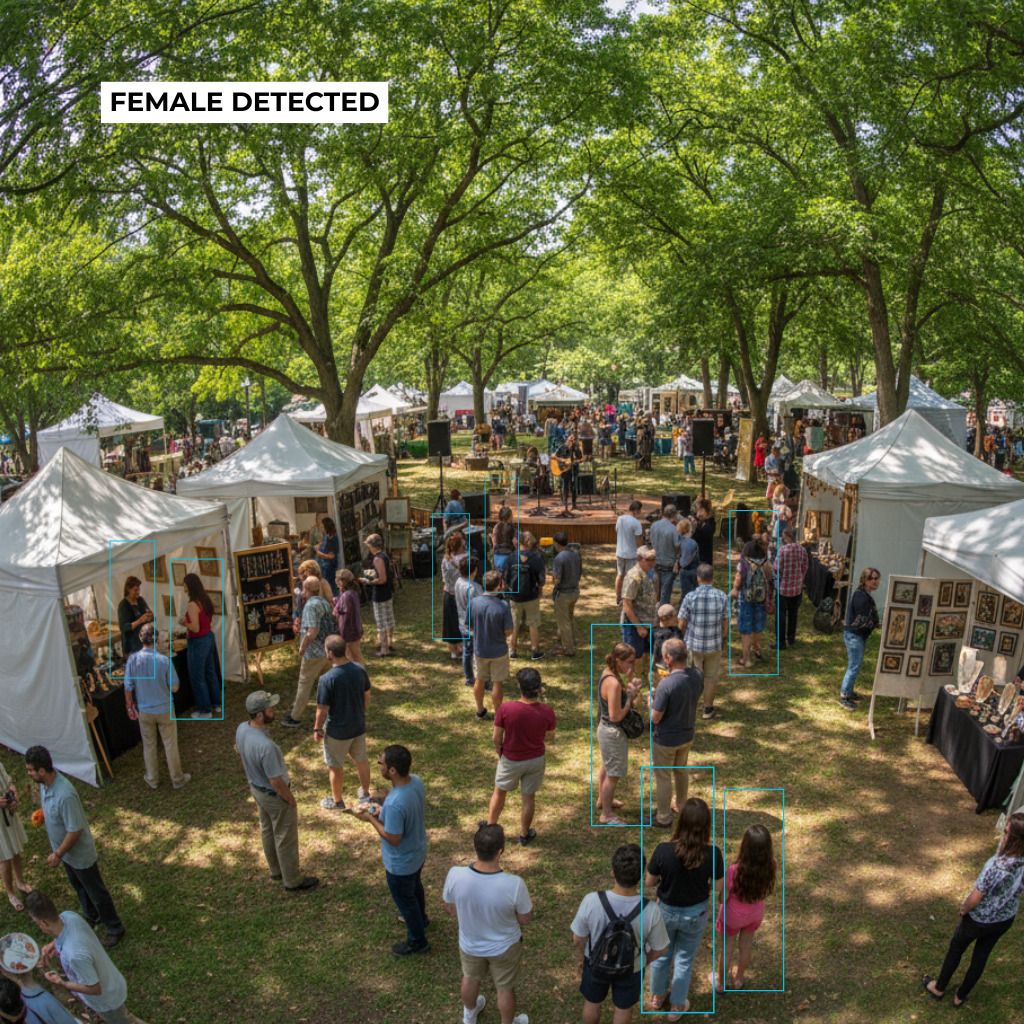Enhancing Event Security with AI Face Recognition
With the return of massive events, organizers face the challenge of protecting thousands of attendees while ensuring smooth and enjoyable experiences.
With the return of massive events, organizers face the challenge of protecting thousands of attendees while ensuring smooth and enjoyable experiences. A good event coordinator has the responsibility of safeguarding thousands of event attendees from an ever-evolving threat while ensuring an easy and enjoyable experience. Standard security approaches are still effective, however, they tend to create limitations and are often reactive.
This has opened the door for innovative solutions, with AI Face Recognition stepping into the spotlight. By combining advanced safety features with efficient event management, this technology is redefining how organizers approach security, making it an indispensable tool in today’s event industry.
What is AI Face Recognition?
AI Face Recognition is a biometric technology that uses computer vision to identify and verify individuals based on their facial features. The system creates a digital map of each face by studying unique markers such as a person’s distance between the eyes, shape of the jawline, and more.
When it comes to event security, this means visitors can be checked effortlessly, accurately, and real-time, without manual ID checks or physical tickets. Instead of waiting in long queues, attendees simply walk through entrance points fitted with cameras, and the system instantly matches their faces with pre-submitted data.
How AI Face Recognition Works
- Image Capture: Cameras installed at event entry points or throughout the venue capture live images or video frames of attendees' faces.
- Face Detection: The system uses computer vision algorithms to detect faces within the images.
- Feature Extraction: After a face has been detected, algorithms will analyze specific facial features and convert these into a unique numerical representation known as a faceprint.
- Face Matching: After extracting the facial features, AI facial recognition systems compare the generated faceprint with guests and staff registered in a database.
- Identity Verification: When a match is found the system verifies the identity of the attendee for access control or flags the individual to security if on watchlist. If a match is not found the prompt may request a manual security check.
See also: Introduction to Computer Vision: Definition and Real-World Applications
Key Benefits for Modern Event Security
1. Improved Accuracy and Reliability
Unlike manual ID checks, which can often be unreliable, AI is accurate and less error-prone. It ensures that only authorized attendees gain entry.
2. Enhanced Safety and Monitoring
Aside from entry points, AI can be integrated with surveillance systems to monitor crowds for any suspicious activity, possible threat, or missing people.
3. Faster Check-In Process
AI Face Recognition shortens queues, allowing attendees to enter smoothly and enjoy the event sooner
4. Reduced Risk of Fraud
Fake tickets and identity fraud are a constant challenge in event management. Facial recognition removes these threats by connecting each ticket to a person’s identity.
Real-World Applications
AI Face Recognition is no longer just a futuristic concept. It is actively being used in:
- Sports Stadiums : To verify season ticket holders and prevent scalping.
- Music Festivals: For fast-track entry and enhanced VIP experiences.
- Corporate Events : To secure restricted areas and protect sensitive information.
- Airports and Transportation Hubs: Ensuring passenger safety and streamlining boarding.
The Future of Event Security is Intelligent
AI Face Recognition is not about watching every move. Instead, it helps make events safer, smarter, and more enjoyable. By automating repetitive tasks such as identity verification, human security teams can focus on what matters most—assessing risks, assisting guests, and making informed decisions.
As the technology evolves and ethical standards strengthen, it is likely to become a common practice in event security, providing peace of mind for organizers and attendees alike.
See also: AI Computer Vision: Seeing What Humans Miss
How AssistX Vision Enhances Event Security with AI Face Recognition
AssistX Vision integrates AI Face Recognition with advanced video analytics to strengthen security and improve efficiency at events. By capturing facial images and matching them to a secure database, it streamlines access control, enhances data insights, and reduces operational costs. Combined with real-time monitoring dashboards and seamless integration with existing CCTV systems, AssistX Vision provides a practical solution adaptable to different event needs.
Conclusion
As events grow larger and more complex, balancing safety and attendee experience is becoming increasingly important. AI Face Recognition provides organizers with a reliable way to improve access control, reduce risks, and support smoother operations. When used responsibly, it not only enhances security but also ensures a more seamless event journey. With solutions like AssistX Vision, event security is moving toward a smarter, more adaptive future that benefits both organizers and participants.
Related article: Real-Time AI Emotion Recognition and Detection to Understand Human Interaction


